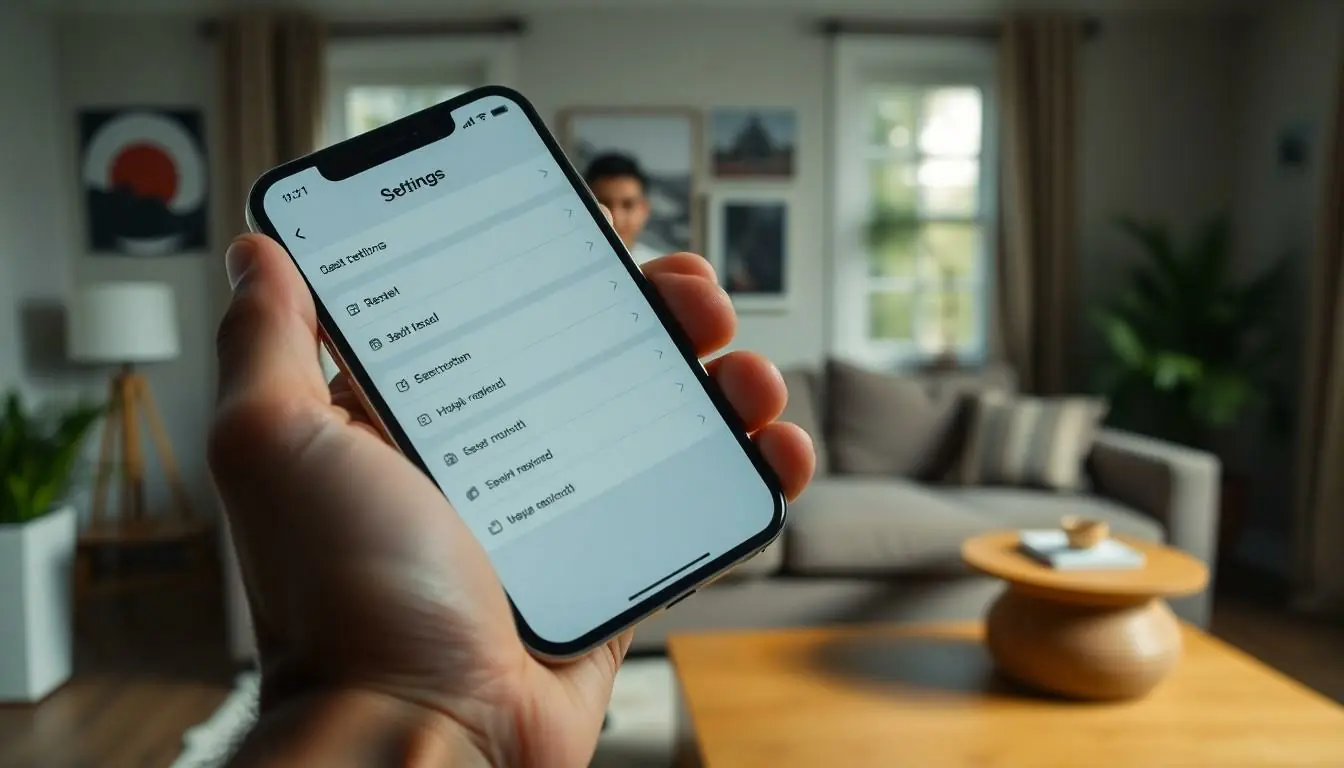Ever found yourself staring at your iPhone, wondering if it’s time for a fresh start? Maybe it’s acting like a moody teenager, freezing up at the most inconvenient moments. But before hitting that reset button, there’s a burning question to tackle: does resetting your iPhone delete everything?
Picture this: you’re ready to wipe the slate clean, but what if your beloved memes and cat videos vanish into the digital abyss? Fear not! Resetting your iPhone can be a lifesaver, but it’s crucial to know what’s at stake. Let’s dive into the nitty-gritty and uncover the truth behind those reset options, so you can confidently decide whether to refresh or rethink your iPhone’s fate.
Table of Contents
ToggleUnderstanding iPhone Resetting
Resetting an iPhone involves returning the device to its original factory settings. Many users ponder whether this process deletes all their data. Important distinctions exist between different types of resets: a basic restart merely refreshes the system, while a factory reset wipes all settings and data.
A factory reset removes photos, contacts, apps, and personal settings from the device. It’s crucial to back up important data before proceeding with this option. iCloud and iTunes provide robust solutions for data backup, ensuring safe preservation of files and settings.
Users can choose from several reset options depending on their needs. The “Reset All Settings” feature maintains personal data while clearing system settings, like Wi-Fi passwords and wallpapers. “Erase All Content and Settings” fully restores a device, eliminating all data. This option serves users selling or donating their devices.
The leniency of these options is apparent. For instance, opting for a reset doesn’t mean all files vanish unconditionally. It’s advisable to weigh the importance of data against the benefits of a reset. Prioritizing data safety helps avoid potential loss during this process.
Understanding the implications of resetting adds clarity to the decision-making process. Users contemplating a reset can benefit from recognizing the specific outcomes for each option. Data management plays a significant role in this scenario, making informed choices essential for a smooth transition.
Types of iPhone Resets
iPhone users can choose from various reset options depending on their needs. Each type serves a unique purpose with distinct outcomes.
Soft Reset
A soft reset involves restarting the device to clear temporary files and reset the system’s functions. Users can perform this by simply pressing and holding the power button until the slider appears. This quick process does not delete any personal data, making it a safe option for troubleshooting minor issues. After completing a soft reset, apps might load faster, and the overall performance may improve. It’s often the first step to address minor glitches.
Hard Reset
A hard reset forces the device to restart and can resolve more persistent problems. Users accomplish this by quickly pressing and releasing the volume up button, followed by the volume down button, then holding the side button until the Apple logo appears. Similar to a soft reset, this action does not erase personal data. This method proves useful for unresponsive devices and can help restore functionality without losing important information.
Factory Reset
A factory reset restores the iPhone to its original factory settings, erasing all data. Users initiate this process by navigating to Settings, selecting General, and choosing Reset. This option permanently deletes apps, photos, and user settings, making data backup essential before proceeding. Once completed, the iPhone behaves like a new device. Individuals often use a factory reset to troubleshoot extensive system issues or prepare the device for resale.
What Happens During a Reset?
Resetting an iPhone involves specific processes that vary based on the chosen reset option. Understanding these processes helps users make informed decisions about their device management.
Data Retention vs. Data Deletion
Data retention and data deletion represent crucial aspects of the reset process. A soft reset keeps all personal data intact, refreshing the operating system without loss. In contrast, a factory reset permanently deletes photos, contacts, and apps. Choosing “Reset All Settings” retains personal data while erasing system configurations. Users must consider the significance of their data before initiating any reset type. Backing up data using iCloud or iTunes is wise for those opting for a factory reset.
Settings and Accounts Impact
Settings and accounts experience different effects based on the selected reset option. A full factory reset restores the iPhone to its original state, wiping user accounts and configurations. On the other hand, selecting “Reset All Settings” only clears system settings, preserving account information. Users can retain their Apple ID and related accounts after certain resets. Understanding the impact on settings ensures users maintain account access where necessary. Prioritizing data safety through backups remains essential when proceeding with a reset.
Preparing for a Reset
Preparing for a reset ensures data safety and smooth device operation. Users must follow specific steps for effective results.
Backing Up Your Data
Backing up personal data is essential before resetting an iPhone. Using iCloud, users can store photos, contacts, and documents effortlessly. Alternatively, iTunes provides a reliable method for creating local backups on a computer. Both options guard against data loss during the reset process. It’s advisable for users to review what’s included in the backup, ensuring that vital information isn’t overlooked. By taking these precautions, users minimize risks and maintain access to their important files.
Important Considerations
Important considerations arise when deciding to reset an iPhone. Each reset option offers different effects on the device’s data and settings. A “Reset All Settings” keeps personal data while restoring system settings, making it suitable for troubleshooting. In contrast, “Erase All Content and Settings” completely wipes the device, necessitating a backup first. Users must assess their reasons for resetting and consider the implications for their accounts and configurations. Recognizing potential impacts aids in making informed decisions, ensuring continuity while addressing device issues.
Conclusion
Resetting an iPhone can be a powerful tool for resolving issues but it’s essential to understand the implications of each reset option. Users must weigh the benefits of a reset against the potential loss of data. A factory reset erases everything on the device while other options like “Reset All Settings” preserve personal information.
Preparation is key. Backing up important data ensures that no vital information is lost during the process. By recognizing the differences between reset types and understanding their effects on data, users can make informed decisions that best suit their needs. This knowledge empowers them to maintain their device’s performance without sacrificing their valuable data.




